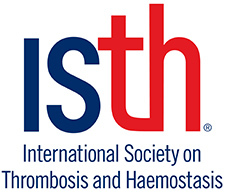ISTH: Data from the World Health Organization Mortality Database Reveal Fewer Deaths from Pulmonary Embolism in the European Region over the past 15 years
Nearly 40,000 people still die from this preventable disorder in Europe every year
CHAPEL HILL, North Carolina, Oct. 13, 2019 /PRNewswire/ -- In Europe, the mortality related to pulmonary embolism, an acute life-threatening condition characterized by blood clots obstructing the lung arteries, has been cut in half since 2000, according to an analysis of data from the World Health Organization (WHO) Mortality Database published today in The Lancet Respiratory Medicine by an international team of scientists.
From 2000 to 2015, the age-standardized mortality due to pulmonary embolism decreased from about 13 deaths per 100,000 people per year to seven deaths per 100,000 people, among a population of 650 million living in 41 European countries, according to the study funded by the German Federal Ministry of Education and Research. The study is the first comprehensive analysis of pulmonary embolism-related mortality in Europe.1
Despite these improvements, the study found that the mortality related to pulmonary embolism remains very high in Eastern Europe, and may be exhibiting an increasing trend in some low- and middle-income countries. This is similar to what has been observed for myocardial infarction and stroke, the two more frequent cardiovascular diseases, in prior analysis of the European population.
Pulmonary embolism caused every year an average of almost 40,000 deaths between 2013 and 2015, and represented a more frequent cause of death in younger women (15 to 55 years) than in men of the same age. As for the risk of developing pulmonary embolism, also the risk of dying from pulmonary embolism rose exponentially with age, the study found.2
"As the global population ages, the medical, societal and economic costs related to pulmonary embolisms will grow," says Stefano Barco, lead author of the study and researcher at the Center for Thrombosis and Hemostasis of the University Medical Center Mainz, Germany. "Therefore, efforts to implement large-scale preventive programs and evidence-based therapies must be maintained and expanded. Much remains to be done to diminish the burden of pulmonary embolism among younger women and better understand the reasons of the geographical differences in pulmonary embolism-related mortality."
Although the interpretation of vital registration data should be cautious due to intrinsic limitations of this type of analyses, as we know that 60 percent of pulmonary emboli are due to hospital admission, it is likely that better prevention strategies in hospitalized patients and improved treatment of pulmonary embolism account for the decreasing mortality due to pulmonary embolisms in Europe, according to the authors.
_______________________ |
1 Barco S et al., Trends in mortality related to pulmonary embolism (p. 10). |
2 Barco S et al., Trends in mortality related to pulmonary embolism (p. 2). |
In 2010, the England National Health Service (NHS) mandated the reporting of risk of venous thromboembolism (VTE) with a target of 95 percent of adult admissions. As a result, there has been a 15.4 percent reduction in deaths within 90 days after discharge across England.
"Using this approach to reduce the national incidence and in-hospital mortality of pulmonary embolisms in the U.K. has been an important strategy for decreasing deaths," says Prof. Beverley Hunt, OBE, chair of the World Thrombosis Day Steering Committee. "Widespread adoption of NHS England's systematic approach to thromboprophylaxis would be of huge benefit to WHO's plan of reducing premature mortality from non-communicable disease by 25 percent by 2025."
Global efforts, such as World Thrombosis Day on 13 October, are underway to build awareness and encourage countries to implement large-scale preventive programs to continue to reduce deaths due to thrombosis. Created by the International Society on Thrombosis and Haemostasis, World Thrombosis Day seeks to increase global awareness of thrombosis, including its causes, risk factors, signs/symptoms and evidence-based prevention and treatment. Ultimately, the campaign supports the World Health Assembly's global target of reducing premature deaths by non-communicable disease by 25 percent by 2025.
More About Pulmonary Embolism
Pulmonary embolism occurs when a piece of a blood clot breaks loose deep in the veins (deep vein thrombosis) and travels in the blood stream to the lungs causing a blockage in a blood vessel. Together, deep vein thrombosis and pulmonary embolism are known as venous thromboembolism and are referred to as blood clots. These can happen to anyone, but are a particular concern among hospitalized patients, who are more vulnerable because long periods of inactivity, surgery and certain health conditions which increase the risk of clotting.
About the ISTH
Founded in 1969, the ISTH is the leading worldwide not-for-profit organization dedicated to advancing the understanding, prevention, diagnosis and treatment of thrombotic and bleeding disorders. ISTH is an international professional membership organization with more than 5,000 clinicians, researchers and educators working together to improve the lives of patients in more than 98 countries around the world. Among its highly regarded activities and initiatives are education and standardization programs, research activities, meetings and congresses, peer-reviewed publications, expert committees and World Thrombosis Day on 13 October. Visit ISTH online at www.isth.org.






Share this article